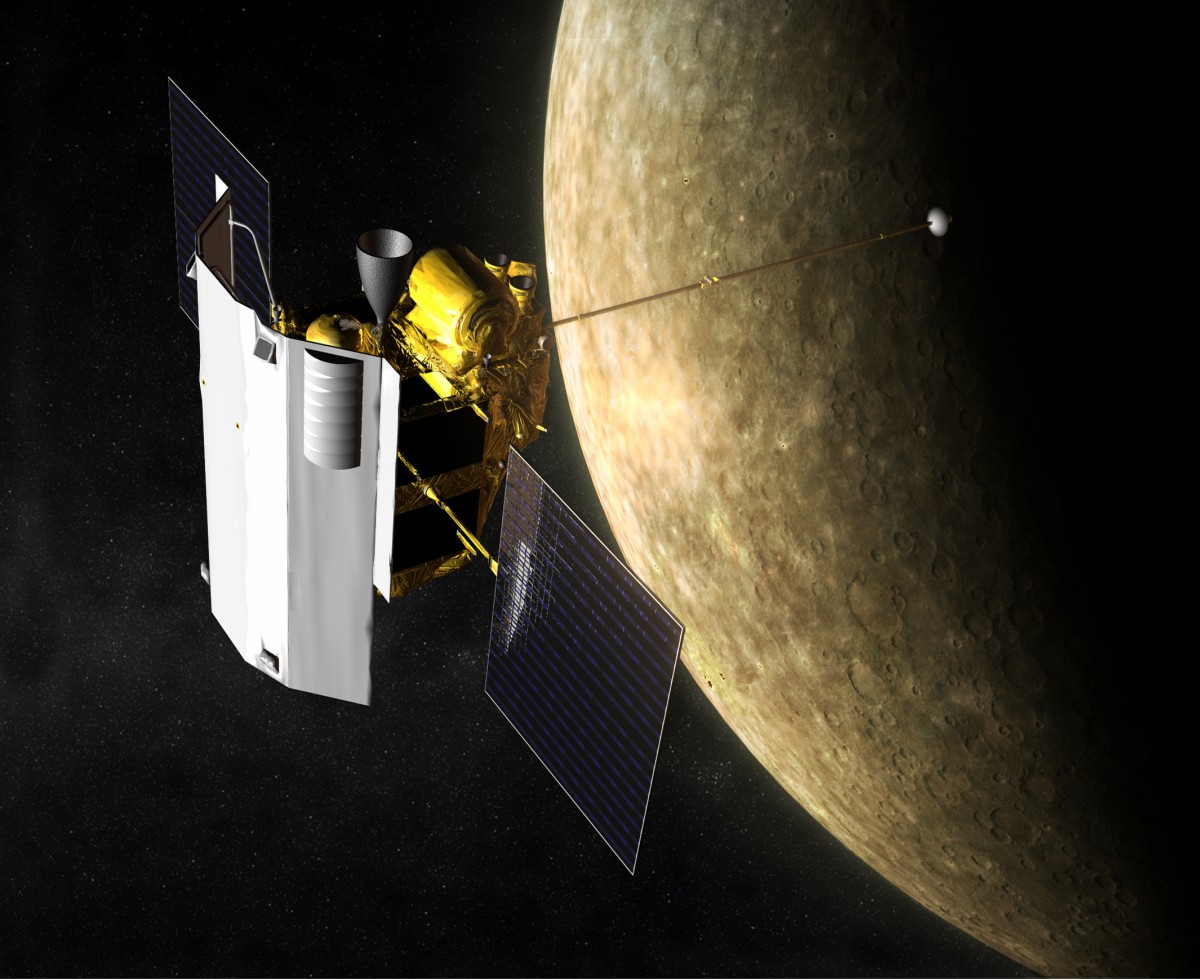Gods and goddesses once provided the names for space discoveries. Nowadays, we’ve got crowdsourcing.
The Johns Hopkins Applied Physics Lab team behind a probe’s mission to Mercury is seeking names for five new (to us) craters that were discovered on the planet that’s closest to the sun. For the crater naming competition, the MESSENGER Team is accepting submissions from all Earth citizens until Jan. 15.
Name a crater
The team will then select 15 names to beam up to the global space powers at the International Astronomical Union.
The NASA-sponsored MESSENGER project has been taking pictures of Mercury, providing scientists with rich data to study the innermost planet. Now, they want to ease communication when they talk about the areas of interest by giving five of the craters specific names.
For instance, one of the craters up for naming features a wavy cliff called a lobate scarp. Scientists are keying in on the scarp because it appears to be evidence that the planet has been shrinking over time. Giving the crater a name will allow scientists to talk about it using a single word reference, rather than spelling out its longitude and latitude every time.

When considering the contest, an entire universe of names might seem up for grabs, but there are International Astronomical Union standards to consider. The IAU says all Mercury craters must be named after world-renowned artists, and they don’t want any duplications from the current list of the already-used crater names, or the complete list of Solar System feature names.
That means Dickens, Beethoven and Lovecraft, among many others, are out. Contest creators also offered another hint: “We are particularly interested in submissions that honor people from nations and cultural groups that are under-represented amongst the currently-named craters.”
The craters up for naming are just a handful of examples of the new understanding of Mercury that scientists are getting from the MESSENGER probe, which is designed and operated for NASA by the Laurel-based JHU Applied Physics Lab.
The robotic probe became the first spacecraft to orbit Mercury in 2011. It has had its mission extended twice, providing photos showing evidence of volcanic activity and sending back chemical data showing similarities with Earth.
Eventually, the craft might become a crater itself as it crashes into the planet. But the JHU APL team keeps finding ways to extend the mission. After two previous extensions that resulted in increasingly-detailed photos, the probe was finally slated to crash in March 2015.
Just last week, however, scientists announced that they found a way to keep it running on fumes. Engineers found they can use helium that was used to pressurize the probe’s propellant tanks to make changes to the probe’s trajectory. While it won’t be nearly as fuel-efficient as other gases, there should be enough helium to give MESSENGER another month to take readings of Mercury’s magnetic field. The episode offers proof that the quest for survival itself can breed innovation.
According to the lab’s lead propulsion engineer, Stewart Bushman, “This is the first time that helium pressurant has been intentionally used as a cold-gas propellant through hydrazine thrusters.”
And all you have to do is think up a clever name.







